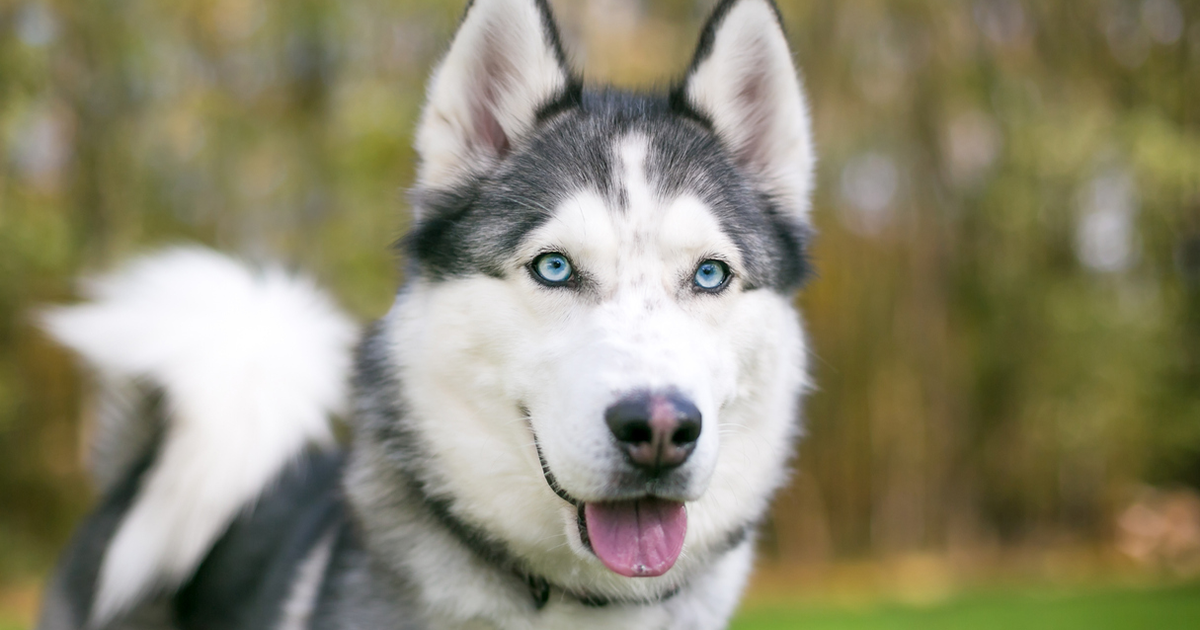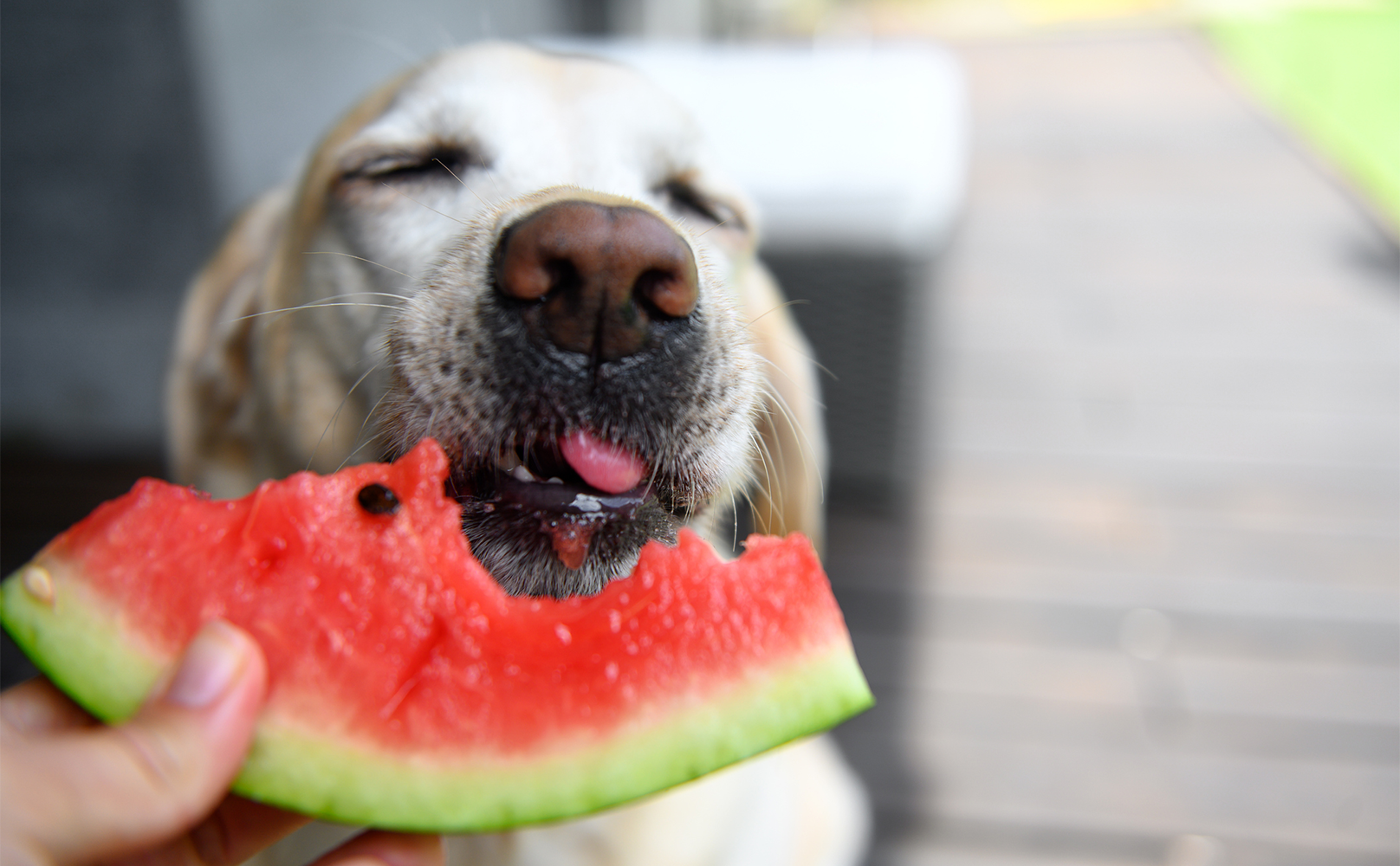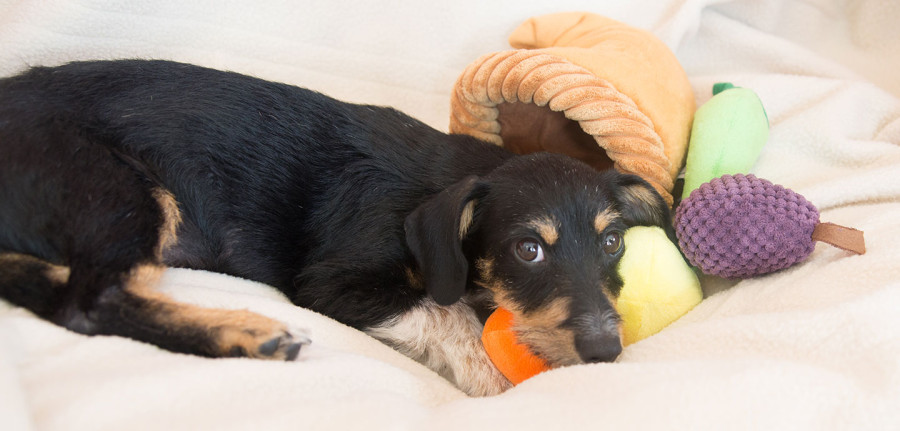

We all know Thanksgiving can be stressful for humans, but think about it from the POV of a pup! All these strangers coming in, randomly touching you, asking why you’re at XYZ job and why didn’t you accept their friend request on Facebook…ok, that may have verged into human concerns for a bit. You get the idea though – as fun as it can be during the holidays, it can also be a very anxious time. To ensure your pup has as fun a Thanksgiving as possible see the tips below!
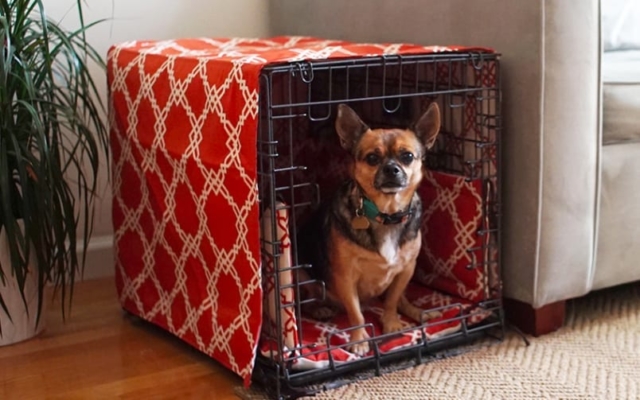

1. Give your dog a Fear Free Fortress (aka safe room)
Just like you sometimes “go for a walk outside” to avoid answering one more question from your great aunt Vivian, pets also like to have to a happy hideaway retreat when they need to destress and chill out. In human terms, it’s similar to their bubble bath after a long day at work, or their “man cave”. Their safe space is essentially the place that your pet can go to and enjoy some ‘me time’ in a form that dogs appreciate. Or, if you note signs of your pet becoming overwhelmed, help your pet out and guide and reward them for moving to their own area. Make sure this area is off limits to both adults and children (the tiny ones can sometimes be overenthusiastic in their love, which can be stressful for a pup).
To encourage your pet to willingly move into these spaces on their own, make it super comfy and cozy. Try to provide special treats in the area to increase their enjoyment such as: stuffed food puzzles that are filled with yummy treats, your dog’s favorite toys that are safe for solo play, veterinary-approved chews, music, and/or diluted calming scents (remember too much scent can be overpowering to a dog’s talented sniffer). Examples of scents you can use are chamomile, lavender, and coconut. As for music, reggae, classical music, species specific music and soft rock are all good choices. You can even play soothing audiobook, like The Lion, the Witch and the Wardrobe (yep – dogs love a good, relaxing book that’s read to them). Use of these additions makes the place extra special and also keeps the pet entertained while they’re away from the rest of the household.
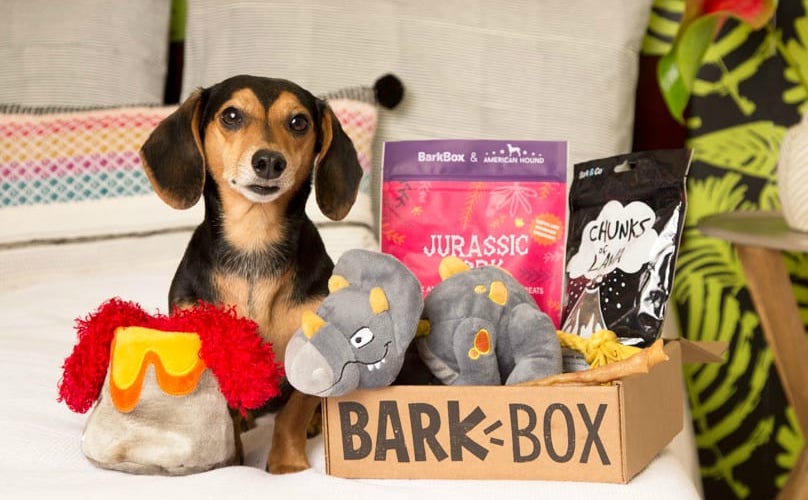

2. Make the holiday special for your pet
Yes- feel free to indulge your pet during the holiday with special treats just for them (think treats and toys that come in oh, say maybe a BarkBox). Dogs love getting yummy, occasional nomz just as much as humans! However, make sure you don’t go overboard on the human goodies that can make your pooch sick. Overly fatty foods, bones, and other scraps of turkey or ham that are given to the dog are actually a health hazard. They can result in serious issues, like intestinal blockage and/or rupture or pancreatitis. In fact, the number one reason pets end up at the emergency vet clinic during Thanksgiving is due to ingestion of human food.
Instead of table scraps, you can spice up their normal treats by adding in small, dog-safe portions of holiday goodness your pet enjoys. Think cooked (but unseasoned) sweet potatoes, canned raw pumpkin, small portions of lean ham or turkey, or even a little fat free gravy to top their normal meal. Better yet, you can elongate the time period that your dog is able to enjoy their special holiday feast by placing it into food puzzles that the dog uses their mind and muscle to work out and enjoy. This takes advantage of your pup’s hunting instinct, and provides a ton of enrichment. To do this, think take your pet’s normal food and add in a small mix of holiday, pet safe food additions.
Now if your dog is a doggy Einstein and easily cracks the most complex of puzzles, consider freezing their treat with plain canned pumpkin or fat free gravy in order to provide an additional challenge. Like smart people, smart dogs thrive on brain teasers that really allow them to solve problems in safe, fun way.
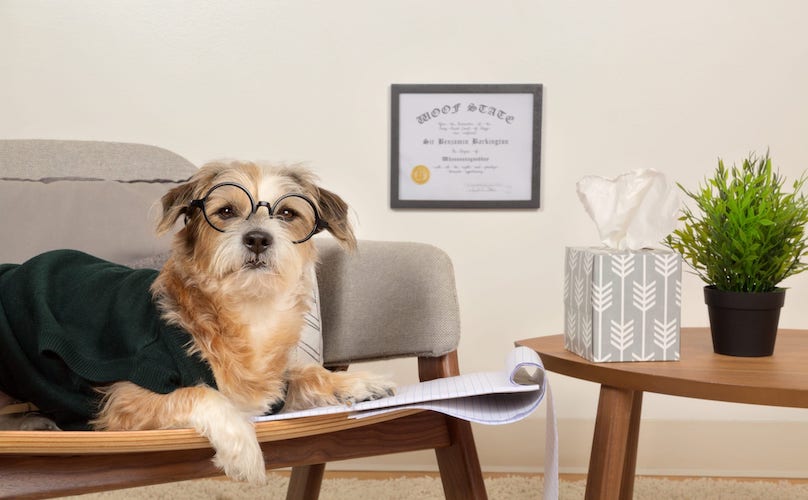

3. Use their language — and teach others how to speak dog too!
Here’s a fun game: Get down on all fours and crawl around your living room. Will you look a little weird? Yeah. But think about how that changes your perspective to objects, other people, and even environmental sounds, scents and sights. This is how your dog experiences the world. Keeping that in mind, try comforting, calming, and entertaining your pooch in a way they appreciate. If you want some fast ways to make any dog your BFF on first greet, refer to this handy-dandy chart below:
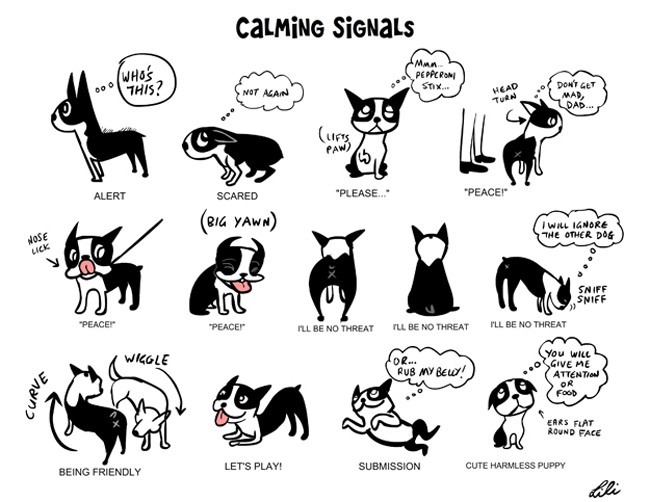

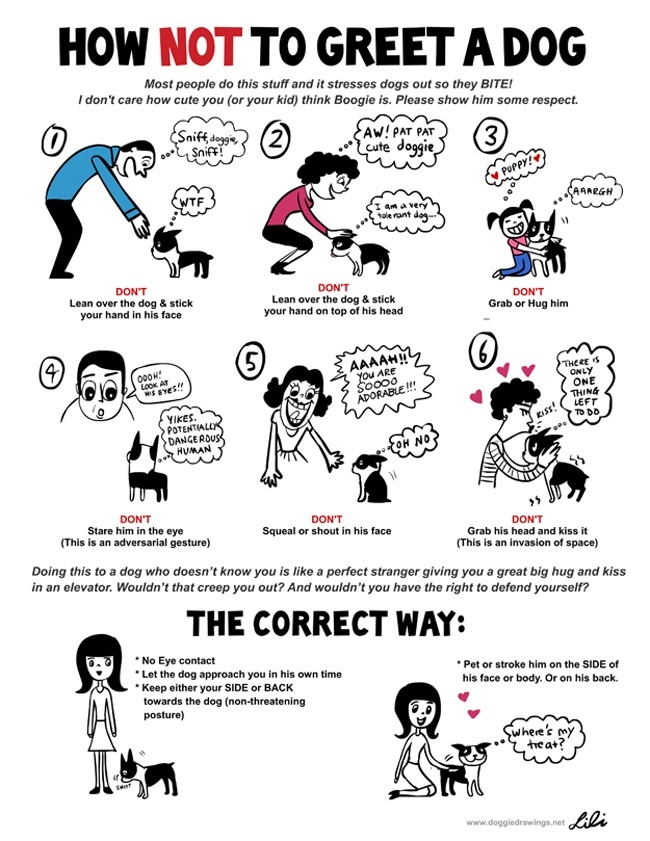

Just like face pinches, slurpy kisses and hugging hold embraces from an overly lipsticked aunt we’ve only met once or twice before can be annoying and unappreciated by a child, so too are such overly friendly gestures a little too much for some pets. Plus, all dogs are different. Each have their individual, unique personalities. While some dogs are ‘extroverts’ that thrive on being the center of attention and MEETING ALL THE PEOPLE OMG YAY (think of Doug in Up!), other dogs fall more on the introvert spectrum.
For many dogs, they’re likely to fall somewhere in between on the introvert-extrovert scale: They enjoy the company of certain people, but become overwhelmed when the situation is out of the norm. During Thanksgiving that can mean all the new people, extra temptations of food begging to be swiped from the counter, even other dogs that might be visiting.For some pups that find the situation super overwhelming, it may be a good idea to let them take a doggy vacation to a pet sitter or doggie hotel. For most dogs though, simply supervising and redirecting the dog to other places (like their Fear Free Fortress) or translating dog to human (e.g. asking cousin Bob to greet your dog by playing with a toy instead of an overly tight embrace) can be ways to keep your dog happier and safer during Thanksgiving gatherings.
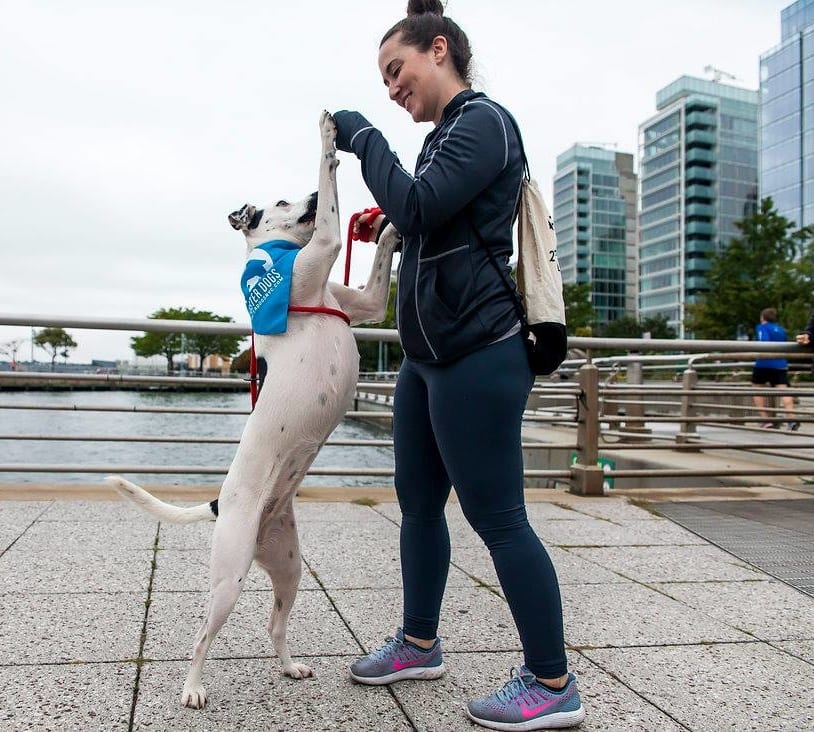

4. Be your pup’s advocate!
Remember dogs, like people, and have their own personalities, likes, dislikes and needs. You know your dog best and are the person they rely on most to keep them happy and comfortable. Instead of pushing your dog’s limits, help to set them up for success. Dogs that try to avoid overly stressful situations or ‘speak up’ (like distancing themselves by hiding or even by using more assertive means, like growling, barking or lunging) doesn’t mean they’re being a bad dog – it just means they’re super anxious and they’re trying to communicate in some of the only ways they know how. Think of a toddler: When they’re crying, that doesn’t mean they’re being “bad” per se, but they’re frustrated by the situation and don’t have the tools to effectively communicate what’s bothering them.One of the most dangerous things you can do when your pup is “acting out” is to try to “punish” them by yelling or using forcible techniques. For instance, scolding the dog for growling at the nephew who tries to approach him while eating their dinner, or snarling at the niece that tries to kiss him on the nose like he’s a cuddly stuffed animal, is putting both the dog and children in danger. Instead, teach visitors how your pup likes to be interacted with, and encourage your dog to go to their Fear Free Fortress if you feel them getting overwhelmed. With children you can even make a game of it by teaching them how dogs communicate and asking them to be the dog’s “spokesperson” to other humans. For example, if the child is old enough, instead of JUST saying your dog doesn’t want people around them while eating, tell the youngster your dog needs space to enjoy their meal and needs their help to “stand guard” and keep others away. Ask them to watch from a safe distance and then come and tell you when the dog finishes.
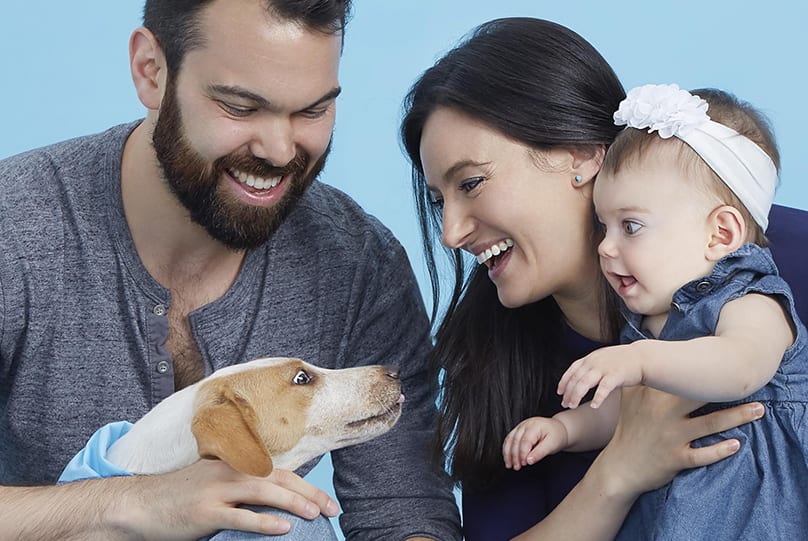

By doing this, you’re not only respecting your dog’s needs and their ability to feel safe, you’re teaching others how to talk your dog’s language. Instead of narrowing your dog’s choices so they feel like they are cornered, translate for them. If you punish them for signaling how they feel, or if you force them to endure an interaction they don’t want (such as the pats on the head from the overly eager toddler), you erode their trust in humans. By doing this, your dog may learn that not only is their voice not heeded, but their person (who they consider their best advocate and friend) won’t stand up for them during times they need it most.
As a result, in the future your dog may feel like they have to take matters into their own paws by escalating to more extreme measures to get their point across. After all, when you punish a growl (or other warning signs from a dog), you’re not solving the underlying issue. Instead, you’re teaching them to hide the symptom of that issue. If you do this too much, what you may end up creating is a dog that ‘bites without warning’, because they feel all their previous ways of de-escalating and trying to communicate discomfort were ignored or taken away. Dogs don’t bite because they’re “mean” – in fact dogs very much DON’T want to bite. Biting is their nuclear option when they feel they have no other choice. Like humans, dogs WANT to get along with everyone, so help set them up for success by respecting their boundaries.
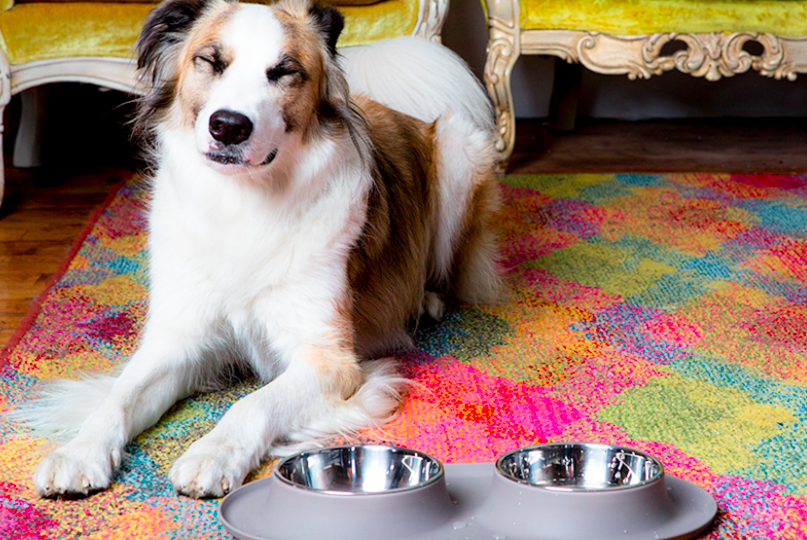

5. Routine, routine, routine
Dogs thrive on knowing what’s going to happen and when. And, while it’s normal that their routine is going to be disrupted during holiday happenings, trying to stick to a regular schedule for your pet’s meals, potty breaks, walks, and playtime. By keeping to key parts of their schedule, you provide a sense of predictability that will provide a sense of calm and wellbeing for your pet.
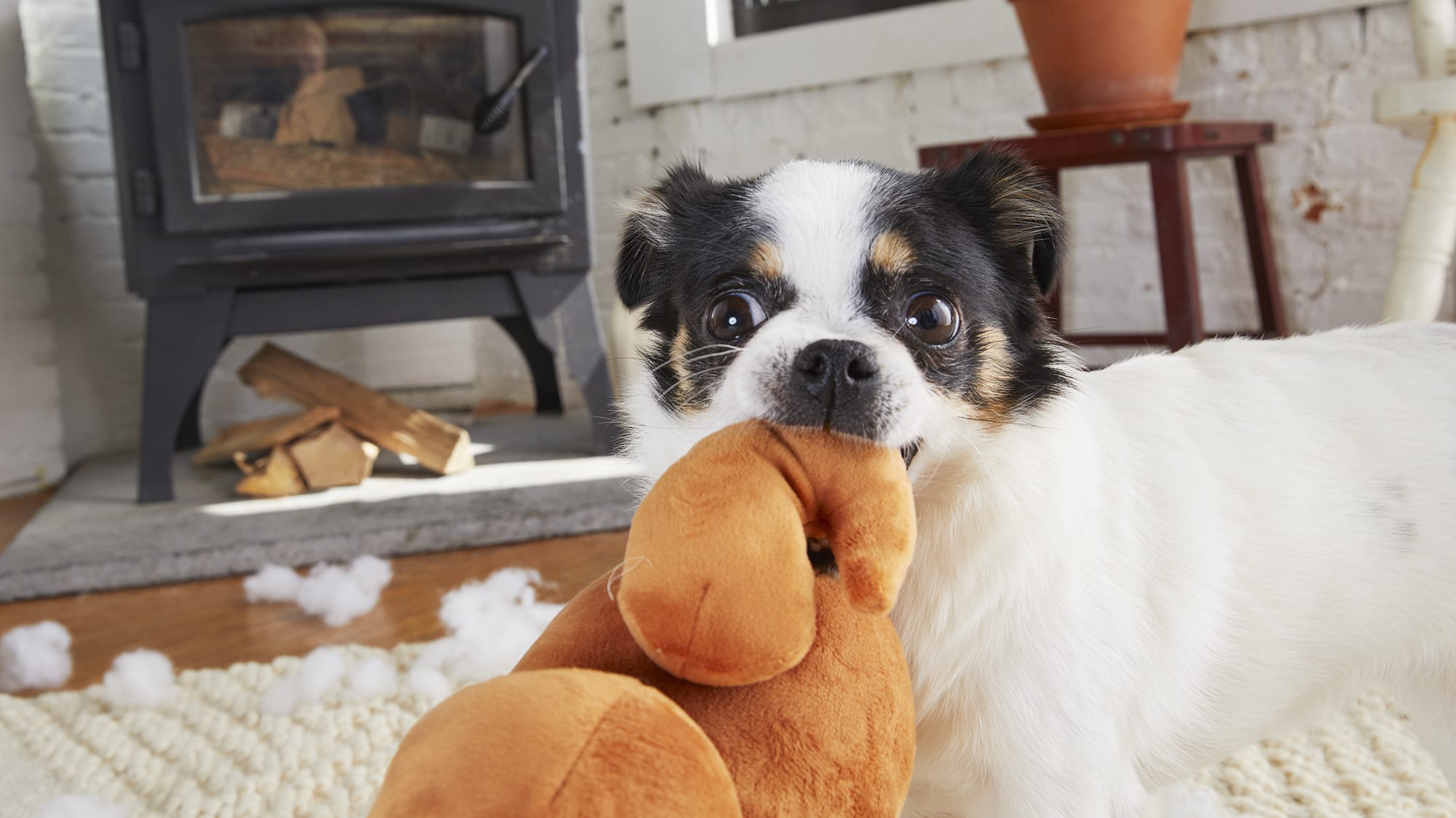

That’s it! To sum up, make sure your dog has their own safe space, give them dog-appropriate snacks and fun, teach people how to speak dog, understand (don’t punish) what your dog is saying, and try and stick to key points of their routine. By following these 5 easy tips, you can ensure a fun, relaxing Thanksgiving with all members of the family, both two-legged and four.




